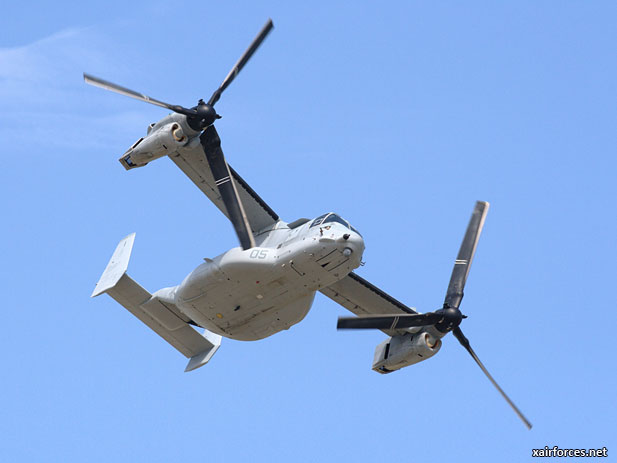
Defense Ministry studies Osprey use by Self-Defense Forces

The Defense Ministry has started studies on equipping the Self-Defense Forces with the V-22 Osprey, the U.S. military transport aircraft whose safety record has sparked huge protests in Okinawa Prefecture, sources said.
The ministry is expected to demand millions of yen for research and studies on the aircraft in the fiscal 2013 budget plan.
The Osprey exceeds current SDF helicopters in terms of flight range, speed and payload capabilities. The ministry expects to eventually use the Osprey to defend the Nansei Islands, including the Senkaku Islands, the center of Japan’s recent territorial feud with China.
The ministry believes the aircraft will strengthen the SDF, as ordered by new Prime Minister Shinzo Abe, the sources said.
Former Defense Minister Satoshi Morimoto in autumn ordered ministry officials to seek expenses on research and studies of the Osprey. The ministry maintained this approach even after the Democratic Party of Japan-led government was ousted from power in December.
The Defense Ministry estimates the cost of one Osprey aircraft at around 10 billion yen ($116 million), more expensive than current SDF helicopters. The ministry plans to study ways to deploy the aircraft effectively and how it can be used in cooperation with U.S. forces in Japan.
But introducing the Osprey to the SDF will fall under a review ordered by Abe of the National Defense Program Guidelines and the Mid-Term Defense Program. It will take several years for the SDF to obtain the Osprey even if the expenses for research and studies are approved.
The SDF will also have to deal with the issues of where to deploy the Osprey and where it will conduct training flights.
The distinctive features of the Osprey are the large tilting rotors mounted on the wings. The rotors are moved in a vertical position for take-offs and landings and are horizontal when the aircraft moves forward.
Critics have raised concerns about the safety of the aircraft. An Osprey crashed when the rotors were readjusting in Morocco in April. Another Osprey crashed in the U.S. state of Florida in June.
The Japanese and U.S. governments investigated the accidents and issued a declaration of safely in September.
But that has done little to quell the protests in Okinawa Prefecture, where the U.S. military deployed 12 Ospreys to the U.S. Marine Corps Air Station Futenma in Ginowan. It plans to send 12 more to the prefecture in 2013.
Regular protests against the Osprey have been held in the southern prefecture, and local government workers and citizens are monitoring movements of the aircraft.
Local governments outside Okinawa Prefecture have also voiced concerns about the U.S. military’s low-flight training, in which Ospreys fly over their areas.
Source: THE ASAHI SHIMBUN NEWS - 31 December 2012
Photo: The V-22 Osprey transport aircraft (Photo by akdart.com)
(31.12.2012)
|
|
|